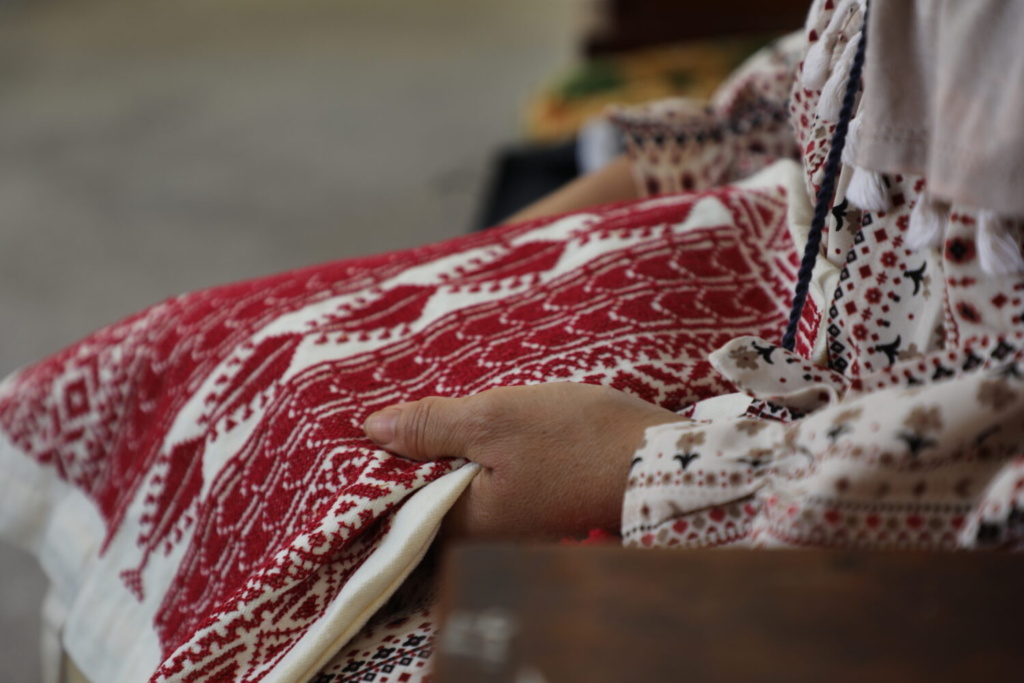Dana Hourany
In the bustling Palestinian refugee camp of Ein el-Helwe, southeast of Saida, Bouthayna used to spend hours immersed in her favorite hobby – the art of Palestinian embroidery, known as tatreez.
Having learned the craft three decades ago at an UNRWA school, she successfully transformed her passion into a profitable business. In September of last year, however, fierce clashes between different Palestinian factions in the camp brought her work to a halt.
“Shortly after that, the Israeli war on Gaza began in October 2023, and people were no longer interested in buying embroidered garments,” Bouthayna told Fanack.
Despite her love for tatreez, this once pleasurable pursuit has become a financial burden. In parallel to the war, Lebanon’s ongoing economic crisis means that the cost of raw materials continues to skyrocket.
“Every time I buy material, I have to pay slightly more to the point where it has simply become unaffordable,” she said.
Tatreez, an ancient craft practiced by Palestinian women, serves as a means to preserve cultural heritage, showcase history and strengthen community bonds while helping refugee women in the shatat (diaspora) generate income for themselves and their families. Palestinian women who arrived in Lebanon after the 1948 Nakba ensured its continuity, passing down the art to younger generations. This enduring tradition, however, faces a number of challenges that force it to take on new forms in order to survive.
Tatreez originated in Palestine over 3,000 years ago. It is a unique embroidery practice that combines colored threads to create traditional motifs. These designs are region-specific and hold symbolic significance for events like weddings or pregnancies.
Colors are also used to indicate different life stages; for instance, in al-Khalil, green is reserved for younger women, while purple signifies older age. Regional differences are expressed through varying shades, such as Ramallah’s bright red compared to al-Khalil’s brownish red.
Around the age of six or seven, young Palestinian girls begin training in this women-led art form, where embroidery is not only a skill but also a means of self-expression and representation of girl and womanhood. Tatreez sessions serve as an opportunity for young girls to learn life stories, skills, and wisdom from their elders.
Tatreez involves various techniques, including the cross-stitch method, known as quṭba fallāḥiyya, which is the most commonly used and symbolic of Palestinian heritage. The diversity in designs often signifies the maker’s village and draws inspiration from the Palestinian landscape.
The stitches usually depict local plants like cypress trees (sarū), palm trees (nakheel), and the S-shaped rubus (ullayq). Fruits and vegetables specific to the maker’s village act as indicators of the place of origin, along with well-known symbols like the moon and eyes, symbolizing well-being, wealth, and protection.
For instance, designs with orange blossoms represent the village of Beit Dajan, and patterns of flowers and leaves indicate a connection to farming or gardening within the village or family.
As Palestinians faced forced expulsion from their homes in 1948 and again in 1967, many women maintained a tangible link to their hometowns by wearing and safeguarding the tatreez thobes. During this time, tatreez underwent a transformation driven by economic and political constraints, particularly in refugee camps. Women adapted by using more affordable cotton and incorporating machine embroidery techniques.
Between 1987 and 1993, following the first Intifada, a period of Palestinian resistance against Israeli occupation, Palestinian women created the ‘Intifada dress.’ These dresses resembled traditional thobes and bore prominent stitches of resistance, adorned with Palestinian symbolism such as national flags, maps, and natural motifs like olive branches and orange trees. Phrases like “we will return” or “our return” were weaved into the fabric in traditional Palestinian colors, representing an act of quiet yet visible resistance.



